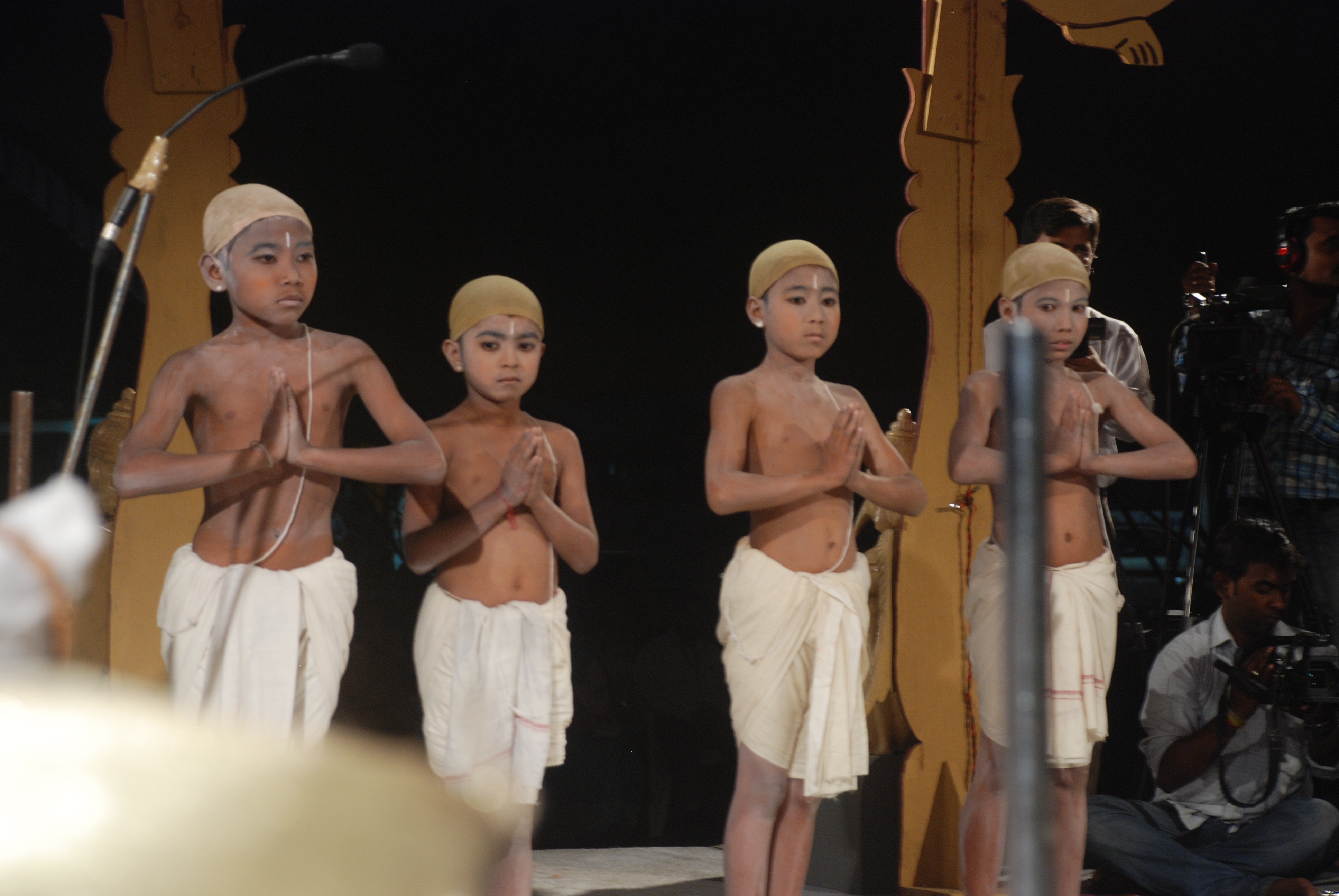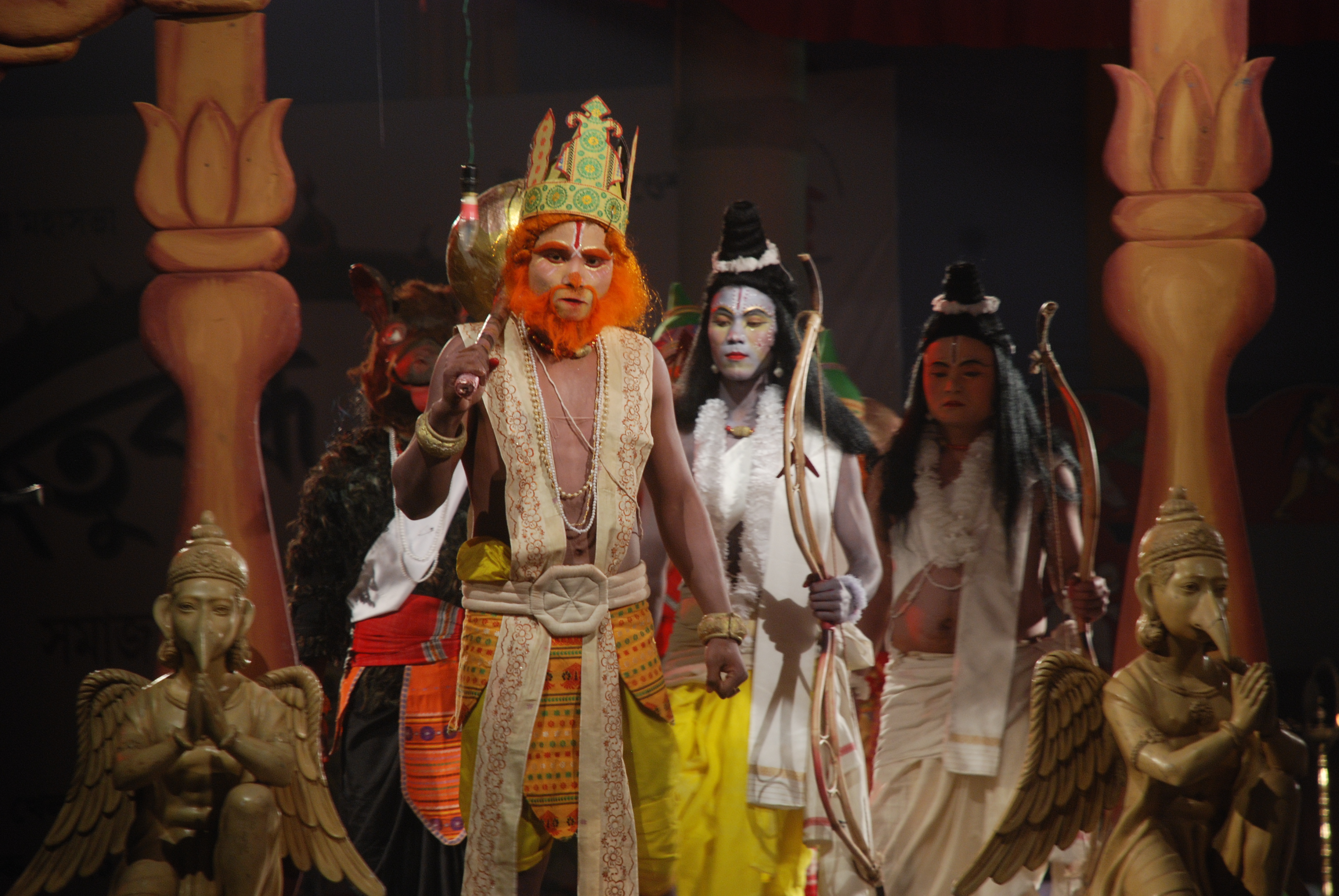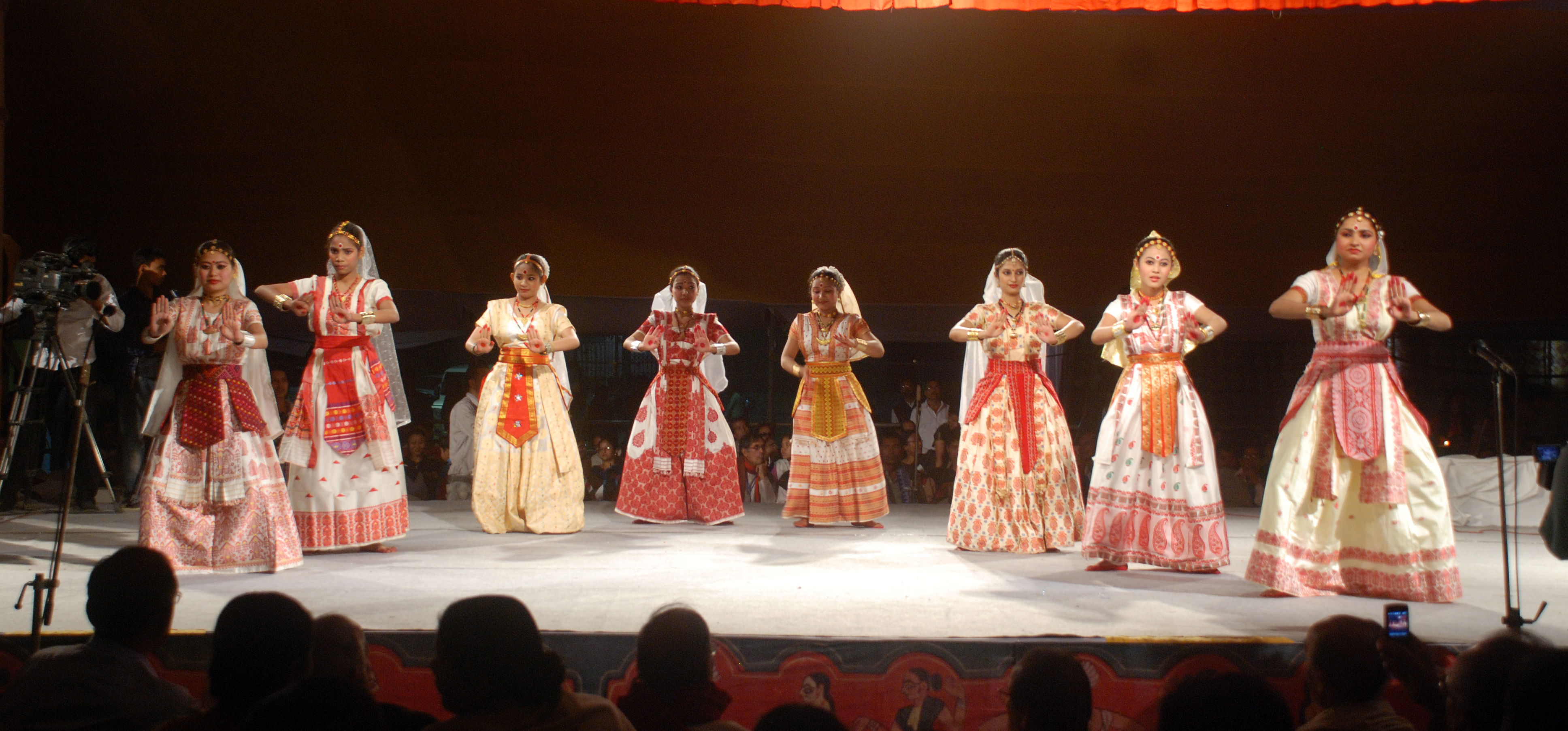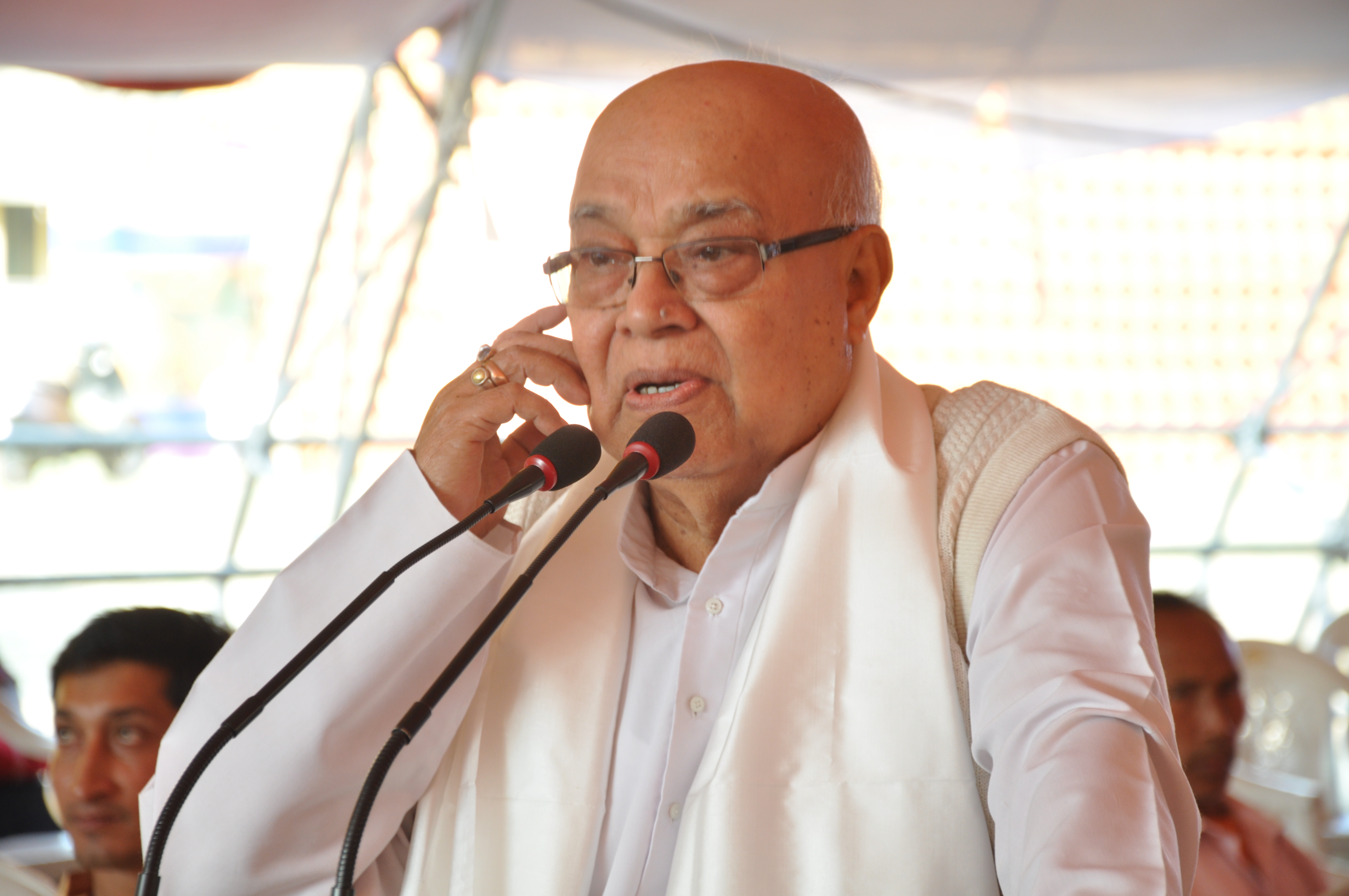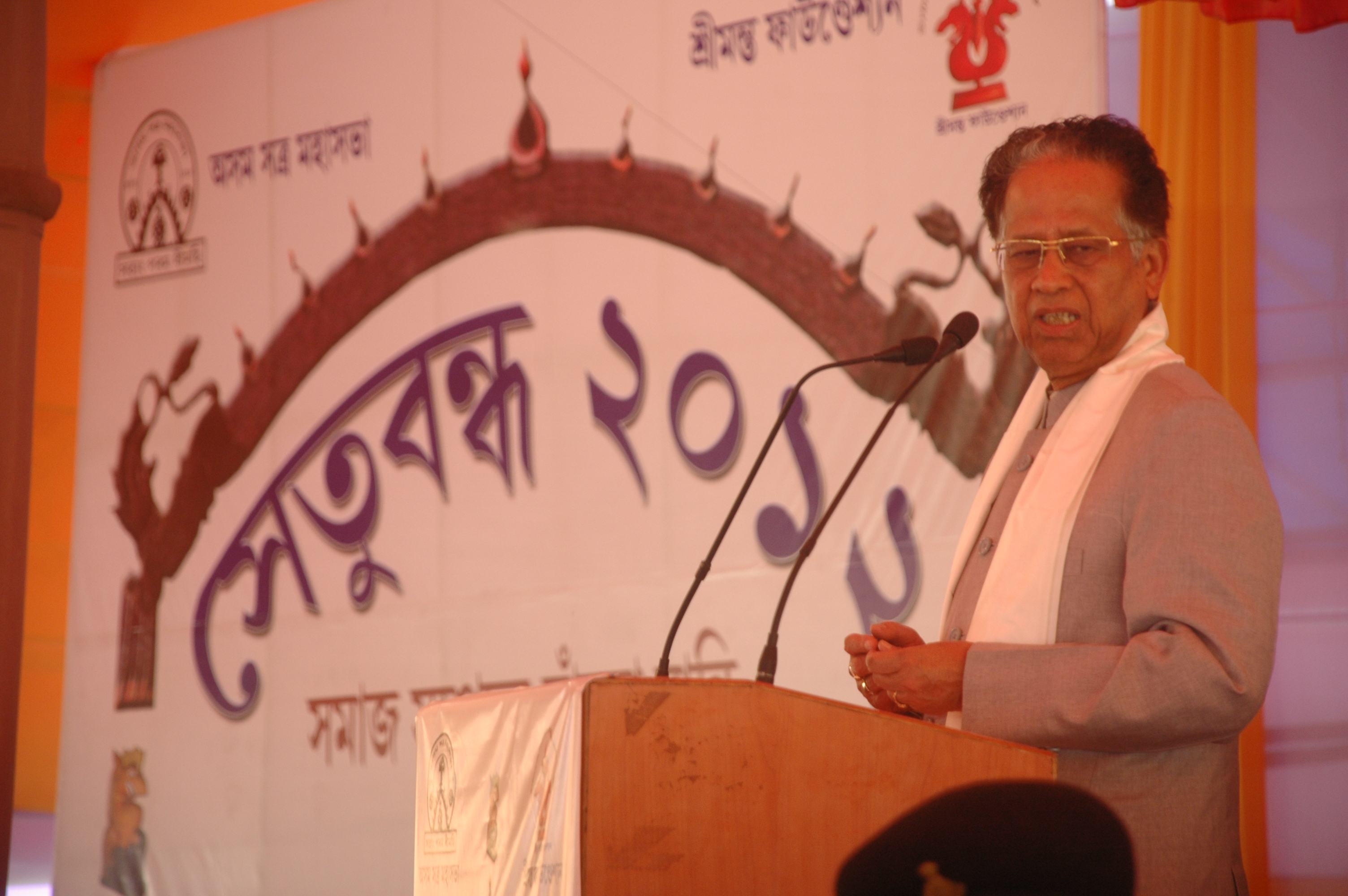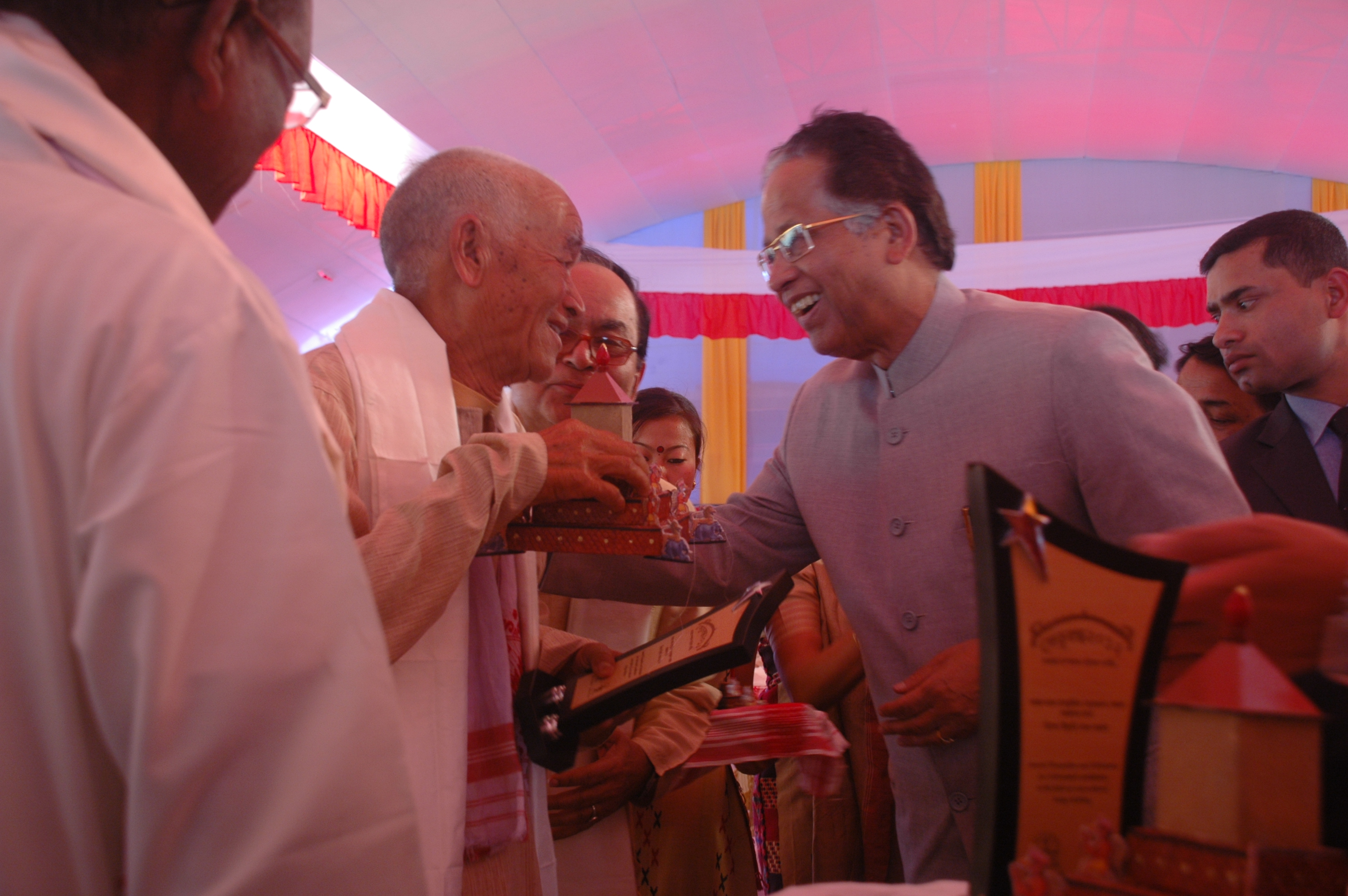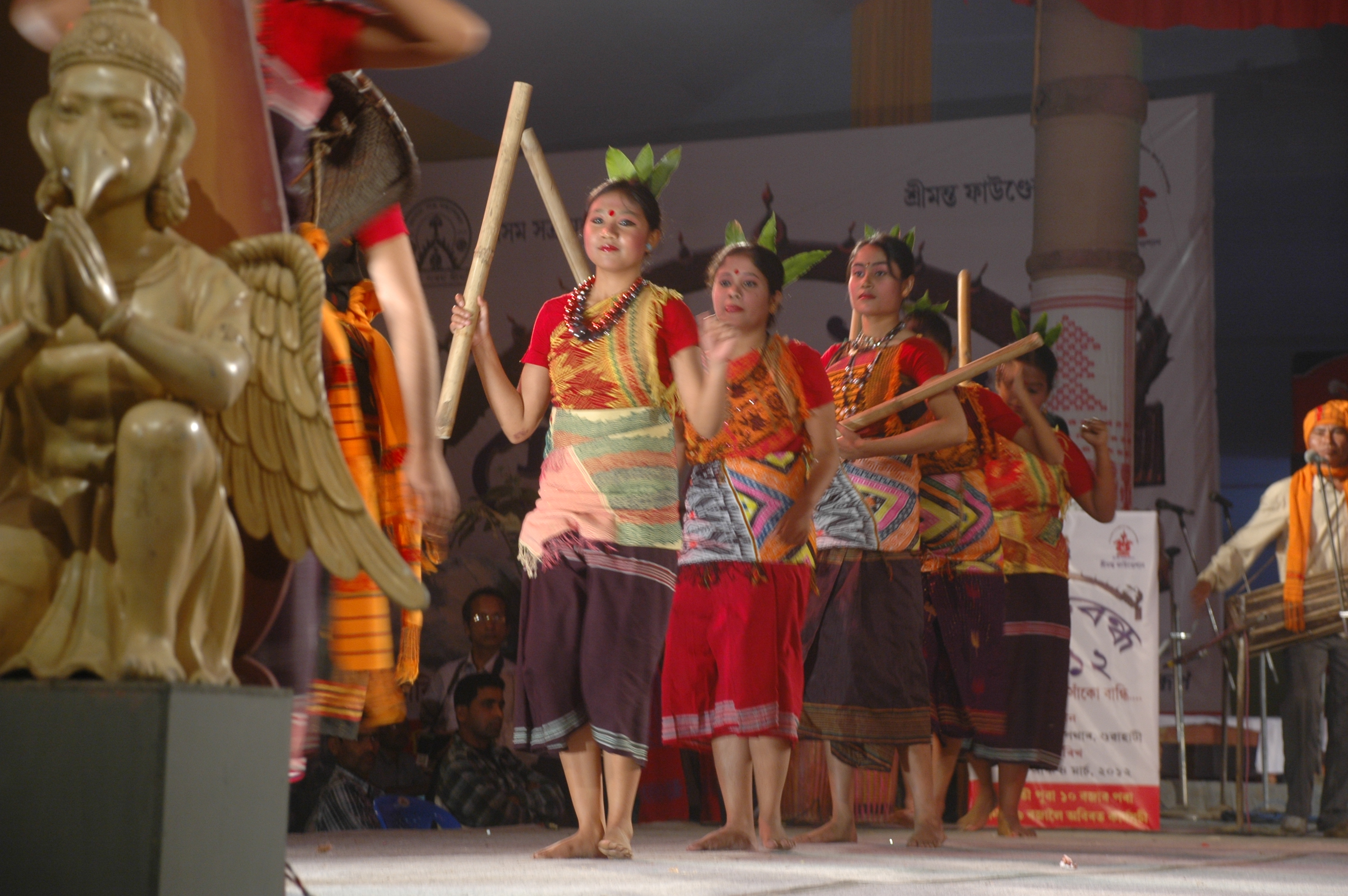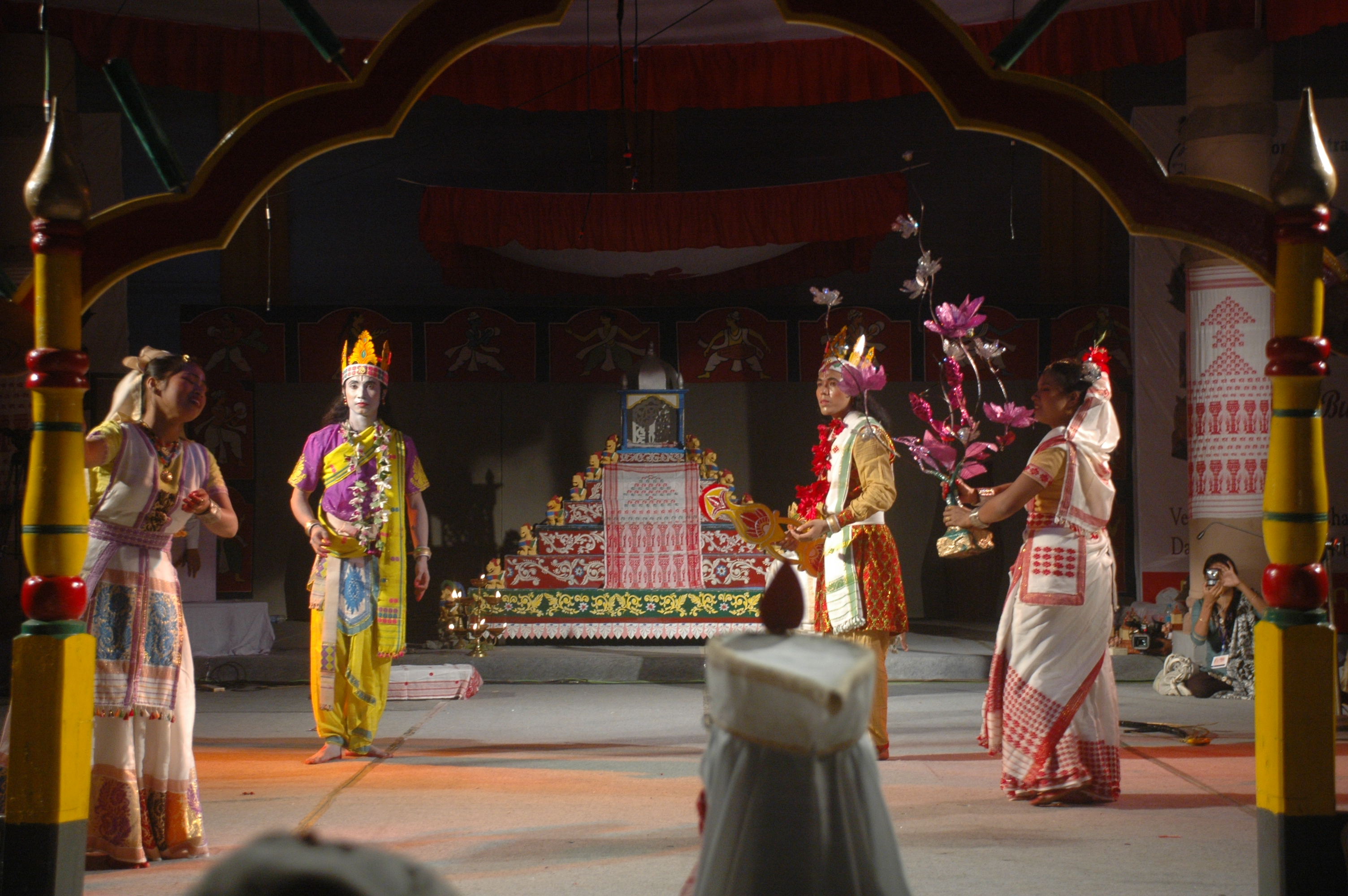- The programme introduced several innovations aiming at enhancing its impact and sustainability
- Setubandha 2012 focused on building social security and capital through continuous engagement
- Transliteration of some of the literary works of Srimanta Sankardeva and his disciples into Bodo and Mising languages for performance
- Post Setubandha Follow-up work i.e., continuity of the learning of such performances and promoting cross-cultural learning i.e., respective communities learning the folk performances of another community.
- Appointed an Acharya in the places from where the bhaoriyas participating in the bhaonas of the Setubandha Programme comes from, for the continuous learning of Sattriya Performing Art forms like mati akhara, khol, nrittya, geet, badya, etc to continue the bhaona tradition and additionally if the people / the samaj where such an Acharya is deputed is willing, then mukha (mask) making, barohoi (wood carving), manuscript painting and other Sattriya craft work can be taken up as means of livelihood for their economic sustenance.
- To perform Bhaona in Bodo and Mising language.
Details
3 Bhaonas performed
- Hiranyakuxipu Bodh by Tamulpur Samannwita Ankiya Natya Samaj from Tamulpur, Baska district. The Gayan-Bayan team for this bhaona was from Balijan Forest, Gohpur.
- Sita Haron Bali Bodh by Jengraimukh Mising Silpi Samaj from Jengraimukh, Majuli district.
- Parijat Haran by participants from various communities like the Moran, Sonowal Kachari, Ahom, Chutiya, Tea-tribes from Kakopather and nearby areas of Tinsukia District.
* Two Bhaonas were in Bodo and Mising language and one from Kakopather was an Ankiya Nat.
Formal Inauguration and Concluding function and four Academic Sessions conducted
- The Mati Akhara ( a form of rhythmic exercises) technique and community health.
- The Khanikar (Craftsmen) tradition – Commercial potentialities.
- Namghar as a Social Institution
- Life, philosophy and the socio-cultural heritage on the Sankardeva Movement
Exhibition held to display and demonstrate the Sattriya culture, its utility and relevance
- The following were exhibited : Manuscript, Puthi-chitra, Sanchi & Tula pat-- its display & preparation, Natural Dyes (hengul, haital, mohi, & other frequently used dyes), Barhoi (wood carving), Assamese Jewelery (of bamboo, cane, paper mesh, gold plated), Mask making (demostration also), Textile, Artifacts ( from reputed Sattras), and Aharjya.
Cross-Cultural Performances (artists of one community performed items of another community) held
- Students of Asom Jatiya Vidyalaya, Noonmati presenting a medley of Bodo songs and dance and Maifatla, songs and dance of the Tiwa community
- Smt Bonti Devi and their group from Majuli presented Mising songs and Smt Anjali Rai Choudhury and her group presented Samangkang, dance and song of the Karbi community
- Sattriya dance by a mixed group of artists from different communities presented
Follow-up Work of post Setubandha 2012
Follow-up led to the formation of Sanskritik Missions
-
Jengraimukh Sanskritik Mission
Misings children and youths from the above areas are learning about bhaona, borgeet, mati-akhara and Gayan-Bayan and the mipak’s (non-Mising) mostly from Phuloni are learning Mising folk dance like Gumrag, Oyenitom and Selloya through daily formal classes
Places
Jengraimukh, Phuloni, Jambut Chuk and Naya Bazar
-
Gohpur Sanskritik Mission
Bodo youths from Balijan Forest learnt Gayan-Bayan and bhaona. In Mainapur, an interior area some 17 km away from Gohpur children belonging to communities like the Bodo, Mising, Karbi, Deori, and Adivasi had come together to learn bhaona. Sri Sri Thuramukh Gazala Sattra near Mainapur children from the neighborhood learnt Mati-Akahara and Nritya. In Gopalpur the Harshachiklas (non-Bodo girls) learnt Bagorumba and the children mati-akhara. While in Rangajan the Bodochiklas (Bodo girls) learnt Bihu.

